Life Energy Beliefs
P
Life Force Ideas Around the World
Here are the P entries of life energy beliefs around the world and from antiquity to the present. An edited and expanded version of this Life Energy A to Z is published in my book
Life Energy Encyclopedia.
P
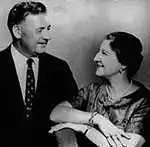
Paraelectricity (para is Greek for 'beyond') is a term used for polarization
of objects in an electric field, but also a concept introduced in 1970 by the
American Christian healers Olga and Ambrose Worrall, who used prayer
in their healing and stated that human thought rules matter, for good and
bad. According to them, prayer sends out a dynamic positive wish, and
the working element in healing is the Holy Spirit (see this expression). But
the Worrall couple has also described it as paraelectricity, an energy
emanating from the healer's hands, partially comparable to electricity but
with a high intelligence that understands to spare healthy body tissue, and
destroy the sick one.
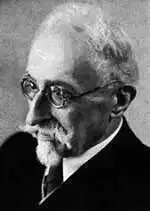
Parapsychology (para is Greek for 'beyond') is the term for research into
phenomena and capacities outside what is possible to explain by natural
science, such as telepathy, psychokinesis, et cetera. The term was
introduced in 1889 by the German philosopher Max Dessoir (1867-1947).
See also psi and psychotronic energy.
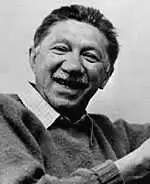
Peak experience is a concept within pshychology, introduced in 1962 by
the American psychologist Abraham Maslow (1908-1970), for an inspiring
sense of clarity, where life feels like a harmonious whole. Although it is
usually short, the experience leads to a lasting sense of calm. It comes near
many kinds of religious experiences, as well as the form of lightened spirit
induced by qi exercises. Another similarity is the Zen concept satori,
enlightenment, a moment of mental clarity that is not the goal of Zen, but
a passing or returning kind of side effect. See also synergy.
Pémpte ousia see quintessence.
Perpetuum mobile see free energy.
Philosopher's Stone see telesma.
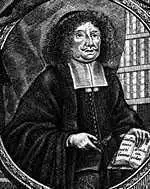
Phlogiston (from the Greek phlogiston, flammable) was in 17th and 18th
century chemistry an imagined material, without weight, color, smell, or
taste, which was the substance disappearing in any burning material. The
theory about this fire substance, which was introduced by the German
alchemist Johann Joachim Becher (1635-82), was abandoned when oxygen
(see this word) had been discovered in the 1770s.
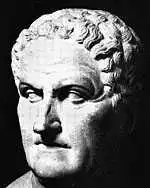
Pneuma is the Greek word for air, breathing, spirit, and wind. Aristotle's
(384-322 BC) ideas about the quintessence (see this word), a fifth element, is
often linked to this word, which is doubtful. But pneuma was central in
the theories of the Greek physician Galen (Klaudios Galenos, 131-201 CE),
which were the basics of medicine all the way to the 17th century. His
thoughts on pneuma can be described as biological applications of
Aristotle's ideas about the quintessence. According to Galenos, pneuma
entered through the lungs, and was in the liver transformed to natural
spirit (pneuma physikon, in Latin spiritus naturalis), which entered the blood.
He also talked about a vital spirit (pneuma zotikon, in Latin spiritus vitalis),
which traveled through the heart and the blood, setting the body in
motion, and a spirit of the psyche (pneuma psychikon, in Latin spiritus
animalis), which traveled from the brain out to the nerves, for the senses to
function. The Holy Spirit (see this word) of the Bible is Hagion pneuma in
Greek, an expression used in the New Testament, which was originally
written in Greek.
Poha/puha see boha.
Po-wa-ha is a Pueblo Indian compound of the words 'water-wind-breath',
which stands for a creative spirit that flows through all of nature.

Prana is the Indian word for breath, spirit, life energy. This energy is
divided into five kinds: Prana (which means 'forward flowing air') is the
basic life energy that also takes care of the basic bodily functions. Apana
('off-flowing air') takes care of what is disposed from the body. Udana
('rising air') takes care of, among other things, growing and posture.
Samana ('balancing air') manages the body's intake of nourishment and
air. Vyana ('outgoing air') manages the blood circulation and other
processes in the body. Each prana's physical function has a psychic
counterpart, also it moves within certain parts of the body, and in certain
directions. There is some disagreement in the literature as to the directions
given above. Prana is what in the kundalini should travel up the body's
main chakras (see these words). In essence, prana is identical with qi. The
ideas about prana are found in the book Rigveda from around the 16th
century BC, which is the oldest preserved book on an Indo-European
language. In this book, Ayurveda ('life knowledge') is the medical teaching.
In the 5th century CE, this teaching reached China, and in the 9th century
CE it reached Arabia.
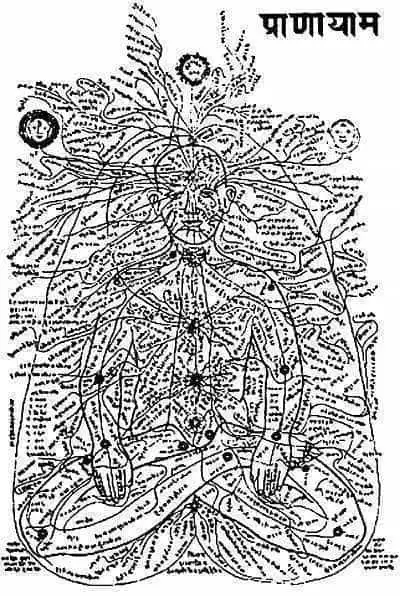
Prana patterns.
Prayer is a religious ritual, wich is quite the same within Judaism,
Christianity and Islam, but the word is also used for similar practices in
other religious systems, where higher powers are invoked verbally. The
connection to practical use, the idea that the method brings concrete help
from incorporeal forces, brings it close to the invocations used in practices
of magic (see this word). The power that prayer is supposed to summon is
sometimes similar to qi and such concepts, but what is often assumed is
the direct intervention of some deity. A basic principle for an inner power
awakened by spoken prayer, is the Indian concept mantra, where chanting
or contemplating certain sounds is done to awaken kundalini and stimulate
the flow of the life energy prana (see these words). When, instead, the
prayer is directed at an external sacred being, the spirit of the prayer is
none other than humbleness and gratitude toward this deity. Still, it may
lead to an inner sense of peace and inspiration, similar to what kundalini
exercises bring. People who have these experiences often describe them as
being filled with a certain spirit or spiritual energy.
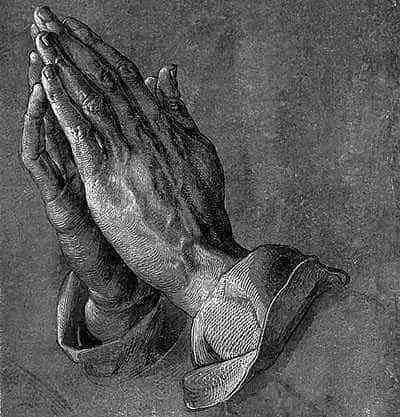
Praying hands, by Albrecht Dürer (1471-1528).
Preanimism see animatism.
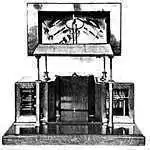
Pre-physical energy is an expression introduced in 1967 by the English
engineer George de la Warr (1904-1969), who also used the term
biomagnetism (see this word). During World War II, he experienced the
machine Homo Vibra Ray Instrument (see homogeneity vibration), which
seemed to cure pneumonia, and was constructed according to the theory
of radionics (see this word). Warr started to research this, initially by using
the machine on plants. He discovered that his own conscious thoughts had
the same effect as the machine. He also found that a drop of blood from a
human had the same force-field as the whole person. He claimed that this
force-field was outside the physical and the spatial. It was an organizing
force-field, according to which the body was constructed. He founded a
research institute to continue his studies. The image shows a radionic camera that he patented in 1955. Compare primary perception.
Prima materia (Latin for 'the first matter') is a term for the basic and
primary. To the alchemists, it was the material out of which precious
metals could be formed. See also quintessence and vril.
Prime mover (in Latin primus motor) is the expression for a theory from the
Greek philosopher Aristotle (384-322 BC) that everything that moves must
be moved by something else, except for a first mover, which is unmoved.
To Aristotle, this is god, the first cause. See also quintessence.
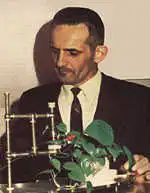
Primary perception is a theory from 1966 by the American polygraph (lie
detector) expert Cleve Backster (1924-), about the ability of plants to
perceive human thoughts and react emotionally to them. He used a
polygraph to examine potted plants. His findings were made famous by
the book Secret life of plants, 1973, by Peter Tompkins and Christopher Bird.
Later on, Backster expanded his theories to claim that also human cells,
removed from the body, have the same ability – toward the person of their
origin. He chose the term primary perception, because he saw it as a basic
form of perception from very early in evolution, and not a later
refinement. It is sometimes mentioned as a synonym to life energy such as qi, but is closer to
telepathy, mind reading (see psi).
Pseudomagnetism is a force that appears when elementary particles are
put into spin. It is sometimes mentioned as a synonym to life energy such as qi, which is
doubtful.
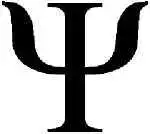
Psi is the overall term for supernatural psychic power or ability, used
within the field of parapsychology. It was introduced in the 1940s by the
English psychologists Robert Henry Thouless (1894-1984) and Bertold Paul
Wiesner (1901-?). The word psi is formed out of letters in the word
'parapsychological' but is also the 23rd letter in the Greek alphabet, which
is often used for the concept. To psi belongs for example psychokinesis, the
ability to move objects without touching them, extrasensory perception
(ESP), to perceive things outside of what the five senses can register,
telepathy, mind reading, precognition, to sense events ahead of time, and
clairvoyance, to see things outside of the reach of the eyes. An early
division of psi was into psi kappa for active manifestations, such as
psychokinesis, and psi gamma for passive manifestations, like telepathy
(kappa and gamma are also Greek letters). There are many theories about
what psi can be, but little agreement within parapsychological research –
even less so outside of it. Psi is hard to compare to the life energy qi, since the former is a
much wider concept than a universal force or energy, but within
parapsychology qi would definitely be categorized as a form of psi. The
word is used in many expressions linked to theories about its nature, such
as psi plasma and psionics (see these words).
Psionics see radionics.
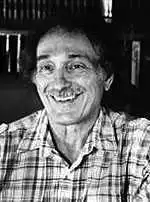
Psi plasma is an expression introduced in 1962 by the American
neurophysiologist Andrija Puharich (1918-1995), for a future state of the
Earth as an enlightened world in perfect harmony. This plan, called
Matrix, is to be realized through technological as well as spiritual religion.
The theory has also been developed by the American philosopher of
science Oliver Leslie Reiser (1895-1974), who in 1965 introduced the
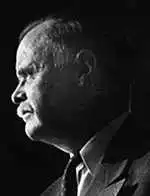 concept cosmic humanism, and compared it to the world brain, from a book
by H. G. Wells (1866-1946). The Earth is seen as an egg, with an embryo
fed by all mankind, animals, and plants on it. Psi plasma is described as a
state of matter, when it is in psychic contact with other matter. Puharich
also introduced the concept inergy (see this word). See also world soul.
concept cosmic humanism, and compared it to the world brain, from a book
by H. G. Wells (1866-1946). The Earth is seen as an egg, with an embryo
fed by all mankind, animals, and plants on it. Psi plasma is described as a
state of matter, when it is in psychic contact with other matter. Puharich
also introduced the concept inergy (see this word). See also world soul.
Psyche see soul.
Psychic energy is a general expression for mental power, used for
example by the psychoanalysts Sigmund Freud and C. G. Jung. See libido.
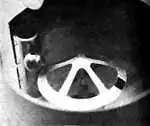
Psychotronic energy (psychotronics) is an expression used by the Czech
inventor Robert Pavlita (1911?-1991) for a biological energy that he started
to construct generators for in the middle of the 20th century. He claimed
that there are at least 68 centers for this biological energy in humans, and
that the energy is neither electromagnetic nor electrostatic. The word
psychotronics was suggested in the 1960s by Czech parapsychologists to
replace the term parapsychology (see this word). They described
psychotronics as the bionics (technical problems that are given biological
solutions) of humans, and claimed that the psychotronic energy is a force
that emanates from all living things.
Life Energy Beliefs from A to Z
|
My Life Energy Books
Qi, prana, spirit, ruach, pneuma, and many other life forces around the world explained and compared. Click the image to see the book at Amazon (paid link).
The life energy qi (also chi or ki) explained, with several very easy exercises to awaken, increase, and use it. Click the image to see the book at Amazon (paid link).
|
My Other Websites
The ancient Chinese life energy
qi (
chi) explained and how to exercise it.
Creation stories from around the world, and the ancient cosmology they reveal.
What the Greek philosophers believed about the cosmos, their religion and their gods.
Taoism, the ancient Chinese philosophy of life explained. Also, the complete Tao Te Ching online.
Other Books of Mine
The Greek philosophers and what they thought about cosmology, myth, and the gods.
Click the image to see the book at Amazon (paid link).
This book examines Jungian theories on myth and religion, from Carl G. Jung to Jordan B. Peterson.
Click the image to see the book at Amazon (paid link).
The Taoism of Lao Tzu Explained. The great Taoist classic, translated and extensively commented chapter by chapter.
Click the image to see the book at Amazon (paid link).
Erroneous Tao Te Ching Citations Examined. 90 of the most spread false Lao Tzu quotes, why they are false and where they are really from.
Click the image to see the book at Amazon (paid link).
About me
I'm a Swedish author and historian of ideas, researching the thought patterns in creation myths. I've also written books about Taoism, the Tarot, and life force concepts around the world.
Click the image to get to my personal website.
 Cosmos of the Ancients
Cosmos of the Ancients Archetypes of Mythology
Archetypes of Mythology Tao Te Ching
Tao Te Ching Fake Lao Tzu Quotes
Fake Lao Tzu Quotes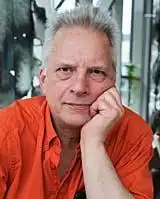 Stefan Stenudd
Stefan Stenudd











 concept cosmic humanism, and compared it to the world brain, from a book
by H. G. Wells (1866-1946). The Earth is seen as an egg, with an embryo
fed by all mankind, animals, and plants on it. Psi plasma is described as a
state of matter, when it is in psychic contact with other matter. Puharich
also introduced the concept inergy (see this word). See also world soul.
concept cosmic humanism, and compared it to the world brain, from a book
by H. G. Wells (1866-1946). The Earth is seen as an egg, with an embryo
fed by all mankind, animals, and plants on it. Psi plasma is described as a
state of matter, when it is in psychic contact with other matter. Puharich
also introduced the concept inergy (see this word). See also world soul.
 Life Energy Encyclopedia
Life Energy Encyclopedia Qi — Increase your life energy
Qi — Increase your life energy